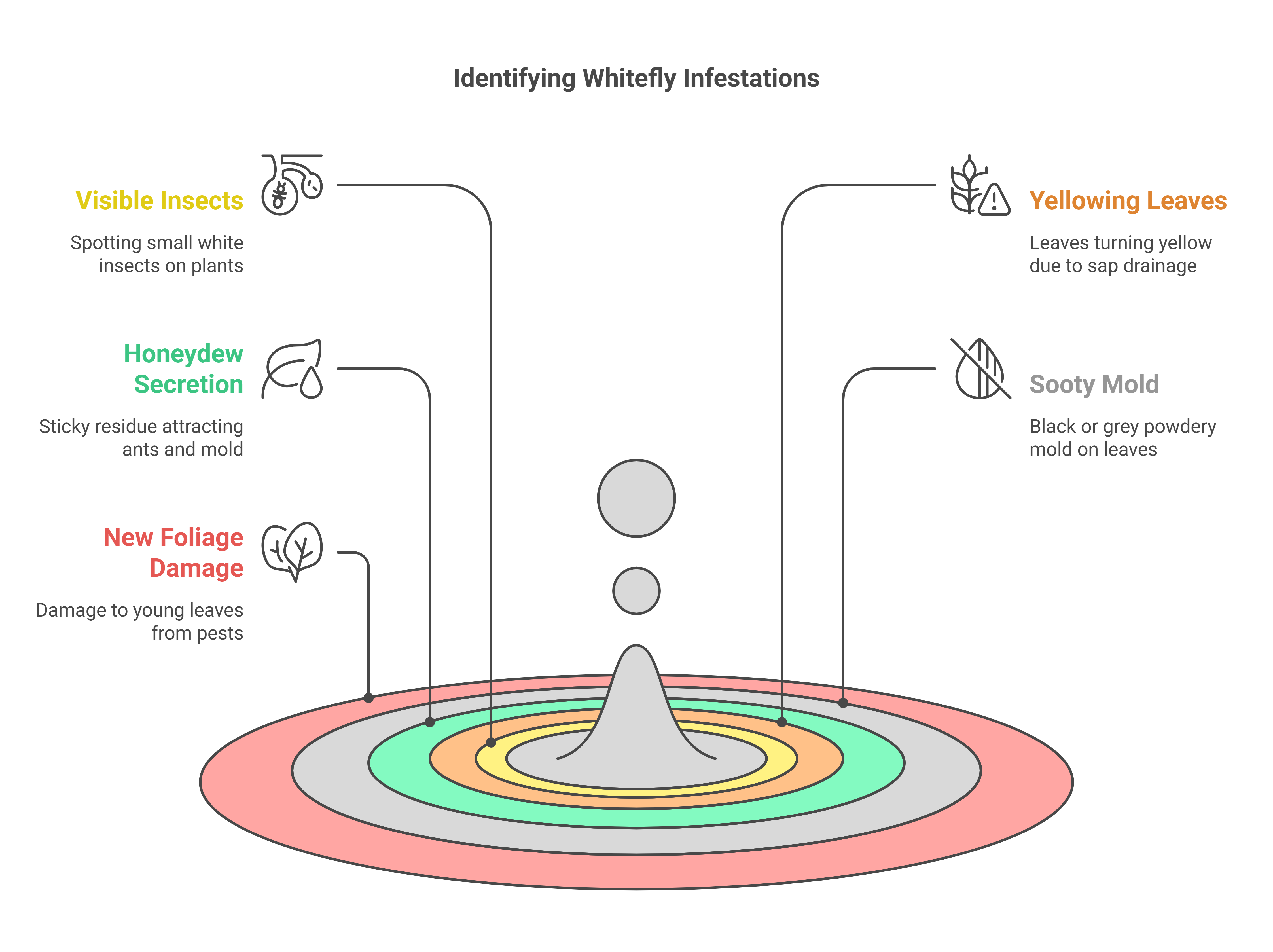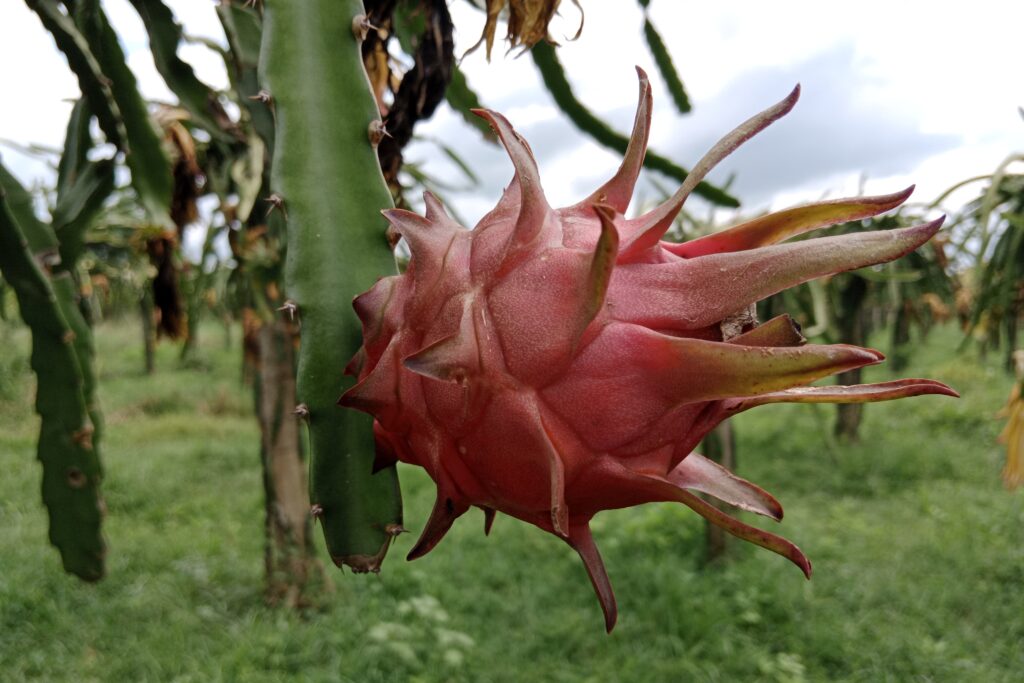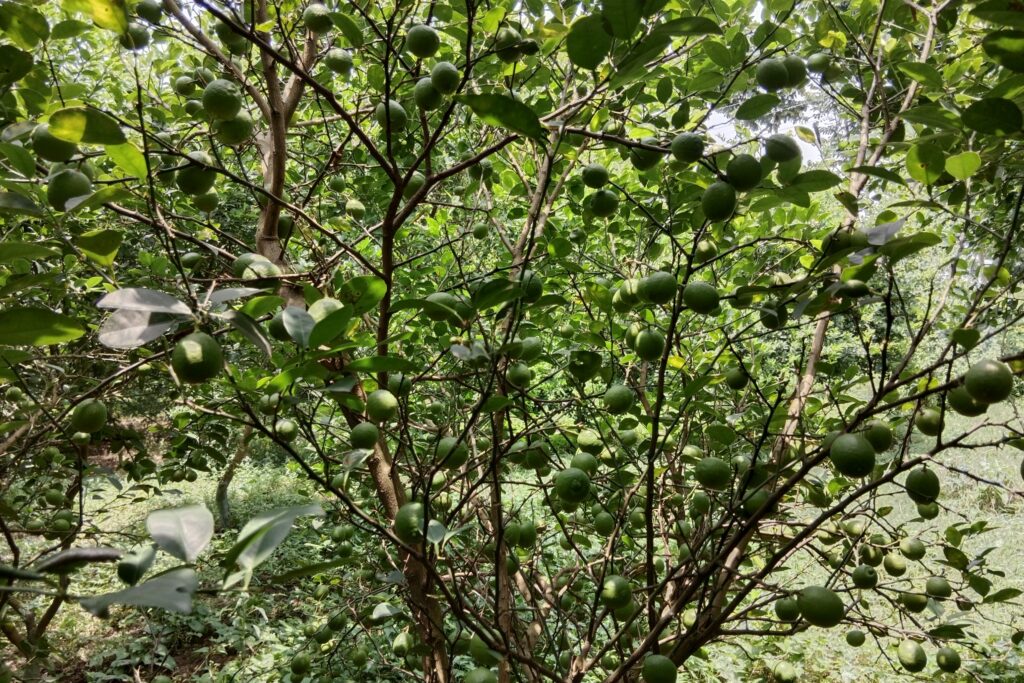Whiteflies are tiny, delicate insects that have the potential to seriously damage your plants. These pests, which are distinguished by their white, triangular wings, frequently congregate on the undersides of leaves, where they spawn, feed on plant sap, and proliferate quickly. The health of your garden or greenhouse may be at risk due to yellowing foliage, reduced growth, and weaker plants caused by their eating. Whitefly populations can skyrocket if left unchecked, causing extensive damage and aggravating gardeners.
We’ll walk you through recognizing whiteflies, comprehending their life cycle, and provide tried-and-true methods for getting rid of them in this blog. We’ll also provide you helpful advice on how to keep your plants healthy and growing by preventing infestations in the future.
What Are Whiteflies?
Whiteflies are small, winged insects closely related to aphids, mealybugs, and scale insects. They survive by piercing plant tissues and sucking out the sap, which weakens the plant over time. Despite their wings, whiteflies are poor fliers and tend to stay close to their host plants.
These pests are hard to spot individually but often congregate in large numbers. Within weeks, their eggs hatch into nymphs, which eventually develop into winged adults, leading to rapid population growth.
Also Read About: Beetles in Agriculture
How to Identify Whiteflies

The following are the main indicators of a whitefly infestation:
1.Visible Insects
Keep an eye out for small, white insects that resemble moths and flit around your plants or sit on the underside of their leaves.
2. Yellowing Leaves
As the pests drain their sap, infested plants frequently exhibit yellowing, wilting, or browning leaves.
3. Whiteflies Secrete Honeydew
Whiteflies release a sticky, sugary material called honeydew, which can draw ants and cause a sooty mold to bloom.
4. Black or Grey Powder
A powdery material on leaves could be a sign of honeydew-induced sooty mold.
5.Damage to New foliage
Although whiteflies favor delicate, young foliage, as their numbers increase, they will also target larger leaves.
Life Cycle of Whiteflies
Effective control of whiteflies requires an understanding of their life cycle:
1.Egg Stage
On the undersides of leaves, eggs are placed in circular patterns.
2. Larval Phases
The sole mobile stage is L1 (First Instar), during which time larvae wander around a little before settling down to feed.
L2-L4: Larvae grow sticky hooks to cling to leaves and become immobile.
3. Pupa Stage
Waxy secretions during the pupal stage provide a protective shell where adult transformation takes place.
4. The Adult Phase
Adults with wings appear, prepared to procreate and carry on the cycle.
Whiteflies are a major annoyance in greenhouses and tropical or subtropical areas because they prefer warm weather.
How to Get Rid of Whiteflies
Controlling whiteflies can be a daunting task due to their rapid reproductive cycle and the resistance they often develop to common pesticides. However, employing a combination of effective strategies can help manage and eliminate infestations, ensuring the health of your plants. Below, we discuss one of the most eco-friendly and sustainable approaches: using natural predators.
1. Natural Predators
Introducing beneficial insects into your garden or greenhouse is a powerful and environmentally friendly way to combat whitefly infestations. These natural predators help keep whitefly populations in check without the need for chemical interventions. Some of the most effective allies in this fight include:
- Ladybugs
Ladybugs are highly effective predators, particularly during their larval stage, when they consume large quantities of whitefly eggs and nymphs. By releasing ladybugs into your garden, you can create a biological control mechanism that targets whiteflies at their most vulnerable stages. - Lacewings
Known as “aphid lions” during their larval stage, lacewing larvae are aggressive feeders that attack whiteflies and other soft-bodied pests. They consume whiteflies at all life stages, making them an excellent choice for integrated pest management. - Parasitoid Wasps
These tiny but mighty wasps play a unique role in controlling whiteflies. Parasitoid wasps lay their eggs inside whitefly larvae. Once the wasp larvae hatches, they feed on the whitefly larvae from within, effectively eliminating them. This natural form of pest control is highly specific and does not harm beneficial insects or plants.
2.Yellow Sticky Traps
Yellow sticky traps are an effective, low-cost solution for managing whitefly infestations by targeting the adult stage of their life cycle. These traps, coated with a sticky adhesive, leverage whiteflies’ natural attraction to the color yellow, luring them in and capturing them upon contact.
By placing these traps near infested plants, particularly close to the leaves where whiteflies congregate, you can significantly reduce their population and prevent them from reproducing. Regular monitoring and replacement of the traps ensure they remain effective, as dust or accumulated pests can reduce their stickiness over time.
While yellow sticky traps are excellent for controlling adult whiteflies, they work best as part of an integrated pest management plan, complementing other strategies such as natural predators and cultural practices to disrupt the whitefly life cycle comprehensively. Their simplicity, affordability, and eco-friendly nature make them an invaluable tool for gardeners and greenhouse growers alike.
3. Horticultural Oils and Soaps
Because these oils and soaps target different stages of the whitefly life cycle, these soaps are very effective strategies for managing whiteflies. Applying neem oil or insecticidal soap to plants coats the pests, suffocates them, and prevents them from reproducing.
Because they don’t harm beneficial insects like bees, butterflies, or natural predators, these treatments are not only efficient but also environmentally friendly. Frequent treatments can greatly minimize infestations while maintaining the safety and well-being of your garden environment, particularly on the undersides of leaves where whiteflies hide.
4. Homemade Remedies
Homemade remedies provide an accessible and eco-friendly way to combat whiteflies using ingredients that are often already available at home. These solutions are particularly appealing for gardeners seeking to avoid chemical treatments while still effectively managing pest problems.
- Garlic or Pepper Spray
A natural and safe repellent, garlic or hot pepper spray can deter whiteflies and other garden pests. To make this spray, blend a few cloves of garlic or hot peppers with water, strain the mixture to remove solids, and pour it into a spray bottle. Apply the solution directly to plants, focusing on the undersides of leaves where whiteflies tend to hide. The strong odor and compounds in garlic and peppers work as natural deterrents, helping to keep whiteflies away from your plants.
- Hydrogen Peroxide Solution
Hydrogen peroxide is another simple yet effective remedy for managing whiteflies. To prepare this solution, dilute food-grade hydrogen peroxide with water, typically at a ratio of 1:4. Spray it on the leaves of infested plants, paying close attention to the undersides. The solution works by killing whitefly eggs and larvae on contact, interrupting their life cycle. Additionally, hydrogen peroxide helps to sanitize the plant surface without causing harm when used in proper dilution.
5. Essential Oils
Whiteflies dislike the scent of certain essential oils, such as:
- Thyme
- Lavender
- Peppermint
- Limonene (derived from citrus oils)
Mix a few drops with water and spray on plants to repel whiteflies.
6. Companion Planting
A traditional gardening method, companion planting involves growing certain plants together to promote growth, strengthen soil, and naturally ward off pests like whiteflies. You can prevent infestations by carefully planting plants that repel whiteflies, such marigolds, basil, and nasturtiums, close to crops that are vulnerable.
While basil’s fragrant leaves not only keep pests away but also improve the flavor of nearby vegetables like tomatoes, marigolds release a potent perfume that whiteflies find disagreeable, overpowering the scent of other plants. As a trap crop, nasturtiums divert whiteflies from your garden’s main plants while enhancing its color.
By encouraging biodiversity and establishing a healthy and balanced garden ecology, this environmentally friendly approach lessens the need for chemical treatments while guaranteeing a successful, pest-free garden.
7. Physical Removal
- Hose Down Plants: Use a strong stream of water to dislodge whiteflies from leaves.
- Prune Infested Leaves: Remove heavily infested leaves and dispose of them properly.
Preventing Whitefly Infestations
Prevention is key to keeping whiteflies at bay:
- Inspect New Plants: Check new plants for whiteflies before introducing them to your garden or greenhouse.
- Maintain Plant Health: Healthy plants are less susceptible to infestations. Ensure proper watering, fertilization, and sunlight.
- Avoid Overcrowding: Space plants adequately improve airflow and reduce the risk of whitefly spread.
- Use Reflective Mulch: Reflective mulch can deter whiteflies by confusing their navigation.
Why Pesticides Aren’t the Best Solution
Despite their apparent speed, insecticides are frequently ineffectual against whiteflies. These pests quickly get resistant, and insecticides can damage beneficial insects, upsetting your garden’s natural equilibrium. Rather, use integrated pest management (IPM) techniques that incorporate organic treatments, traps, and natural predators.
Conclusion
Whiteflies may be small, but their impact on your plants can be devastating. By understanding their behavior, life cycle, and preferred habitats, you can take proactive steps to eliminate and prevent infestations. From natural predators to homemade remedies, there are plenty of effective, eco-friendly ways to protect your plants from these pesky invaders.


